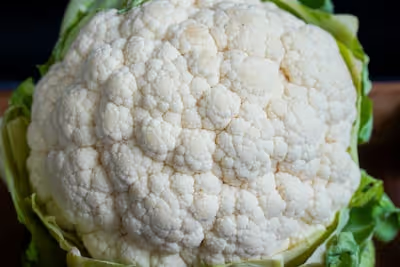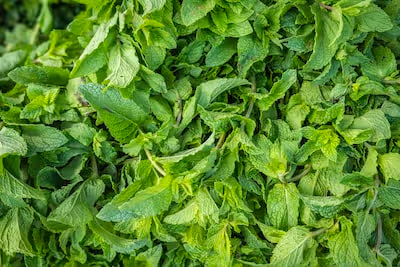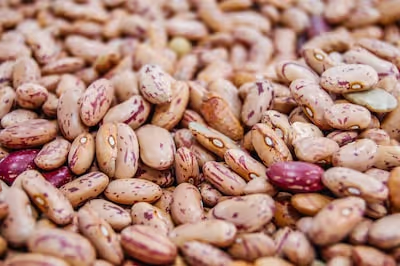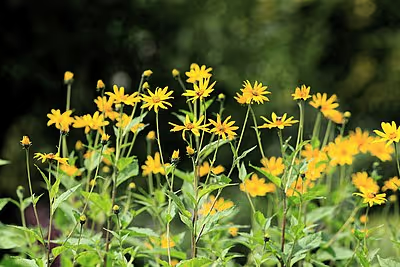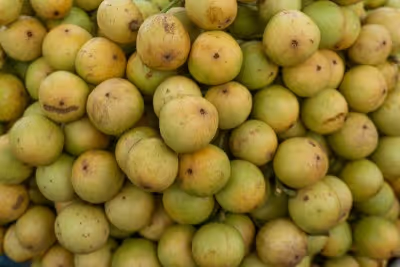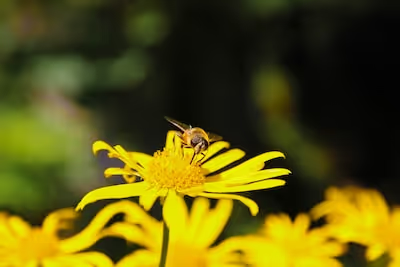Growing Greenbrier: Expert Advice for Healthy, Lush Plants
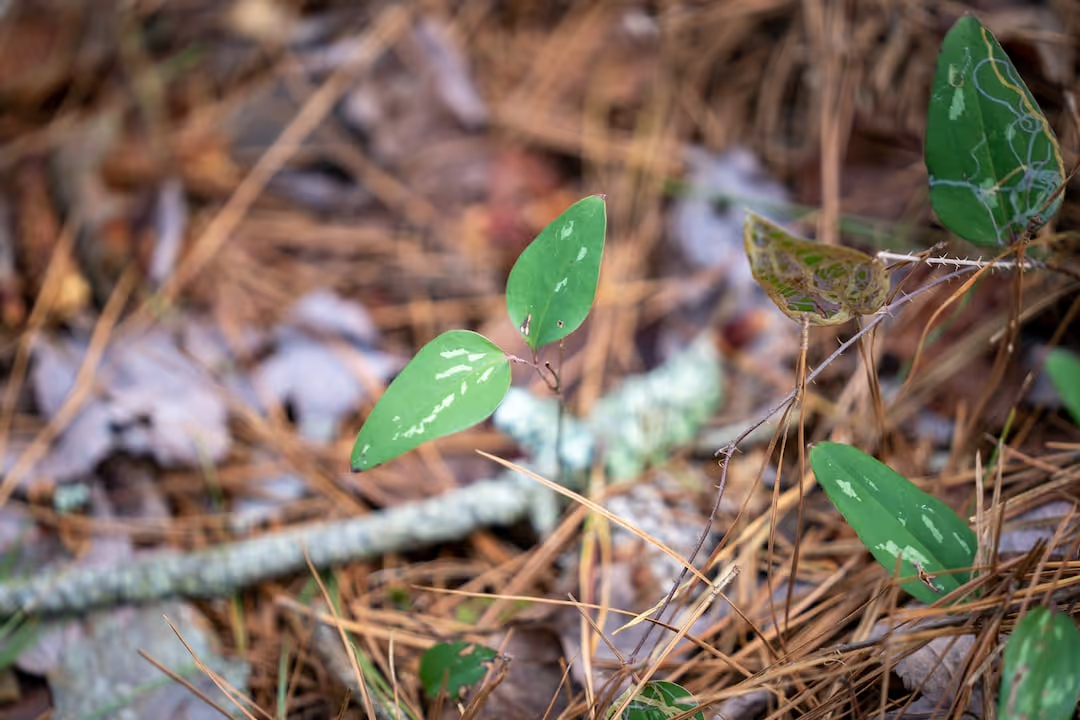
Growing Greenbrier
Growing Greenbrier starts by choosing well-drained, fertile soil and a spot drenched in sunlight. Trim regularly to keep growth in check and encourage denser foliage—these resilient climbers thrive with consistent pruning. Protect tender shoots from frost and pests, and your Greenbrier will reward you with lush, vibrant coverage. Read on for simple methods to cultivate this overlooked beauty.
Cheatsheet: Fast-Track Guide to Thriving Greenbrier
🌱 Site Selection & Planting
- Sun: Light shade to part sun
- Soil: Well-draining, sandy or loamy
- Spacing: 3–5 ft (90–150 cm) apart
- Depth: Plant tubers/cuttings 2 in (5 cm) deep
- Time: Plant after last frost, soil ≥60°F (16°C)
💧 Watering & Feeding
- Keep soil moist but not soggy
- Mulch to retain moisture, suppress weeds
- Feed with compost in spring
🌿 Pruning & Training
- Prune unruly vines monthly
- Support: Trellis or fence for vertical growth
- Trim back after flowering for shape
🛠️ Tools and Products You'll Need
- Garden gloves
- Pruning shears
- Mulch
- Compost
- Trellis or sturdy support
- Trowel
- Watering can or hose
🦋 Wildlife & Pest Control
- Deer and birds feed on shoots
- Use netting if harvest is intended
- Rarely plagued by disease
🌾 Health, Nutrition & Self-Sufficiency
- Shoots: Steam or sauté, rich in antioxidants
- Roots: Contain starch, can be foraged
- Wild food—no fertilizer or pesticides needed
📈 Pro Tips & Stats
- Greenbrier shoots grow up to 12 in (30 cm) weekly in spring
- Harvest young shoots ≤8 in (20 cm) for best flavor
- Perennial; resprouts for 20+ years
Prepare soil: Loosen, amend with compost.
Plant: Set tubers/cuttings 2 in (5 cm) deep, 3–5 ft (90–150 cm) apart.
Install support: Place trellis or fence beside planting site.
Water: Moisten after planting; maintain consistent moisture.
Mulch & feed: Apply 2 in (5 cm) mulch; top-dress with compost annually.
Prune/harvest: Cut vigorous shoots for food or control; shape as needed.
-
Growing Greenbrier: field-tested tactics that actually work
I grow Smilax where I want honest grit in the garden: a living fence, wildlife pantry, and edible spring shoots in one plant. It rewards a firm hand and repays any neglect with berries and birds.
Know your plant
Greenbrier is a native, thorny, tendriled vine with underground rhizomes and tubers that store energy like little potatoes. Stems climb 10 to 30 ft tall (3 to 9 m) and can regrow after a hard cut, which makes training easy and containment essential.
“Smilax species are dioecious, with staminate and pistillate flowers on different plants.” Flora of North America
Translation: male and female flowers live on separate plants, so fruit requires both sexes. I plant one male for every three to five females to load the vines with berries for birds.
Best species for gardens
- Smilax rotundifolia (common greenbrier): zones 4 to 9, vigorous, deciduous, reliable trellis cover; my pick for a fast screen.
- Smilax bona-nox (saw greenbrier): zones 6 to 9, showy mottled leaves, stout prickles, semi-evergreen in warm areas; great for coastal heat.
- Smilax glauca (cat greenbrier): zones 5 to 9, pale leaf undersides that glow in evening light; tolerates drier soils.
- Smilax tamnoides (bristly greenbrier): zones 4 to 8, long canes for arbors, dense bird cover.
These are widely available from native plant nurseries and restoration suppliers. Check your local flora lists first, since several species are regional.
Site and soil
Sun to part shade yields the best structure and fruit, while deep shade slows flowering. Greenbrier tolerates clay to sand if drainage is decent, and thrives in loam with organic matter at pH 5.5 to 7.5.
I amend planting holes with compost, not peat. Mulch 2 to 3 in thick (5 to 7.5 cm) to hold moisture and suppress weeds.
Planting and spacing
Plant containers or divisions in early spring once soil sits above 50 F (10 C). Space 3 to 6 ft apart (0.9 to 1.8 m) for a hedge, tighter for a screen.
Set rhizome pieces 2 to 3 in deep (5 to 7.5 cm) with buds up, then water to settle soil. Install a stout support before growth surges.
Support that holds
Greenbrier grabs with tendrils, so give it something honest to coil around. I favor cattle panel, welded wire, or a 12-gauge high-tensile line run between posts, tightened like a guitar string.
For walls, use a stand-off trellis to keep airflow and avoid scraping paint. Train new canes gently and tie with soft ties until tendrils take over.
Water and feeding
After planting, give 1 in of water per week (25 mm) for the first season, then taper as roots mature. Drought-tolerant plants produce fewer berries, so keep the top 6 in of soil (15 cm) slightly moist during flowering and fruiting.
Feed lightly in spring with a slow-release 5-10-10 at label rates if soil tests low in phosphorus and potassium. Too much nitrogen drives lanky growth that flops and bites back during pruning.
Training and pruning
I tip soft leaders when they hit 8 to 12 in long (20 to 30 cm) to push side shoots and thicker coverage. In late winter, I cut out dead, tangled, or wayward canes at the base and thin to a dozen strong stems per plant.
Wear leather gloves and eye protection. Those prickles mean business.
Pollination and fruiting
Males carry pollen, females carry berries. If wildlife fruit is a goal, buy sexed plants or plant a small group to raise your odds.
Small flies and bees handle pollination, so avoid broad-spectrum insecticides during bloom. Flowers appear late spring, with ripe black or blue-black berries by fall.
Propagation that pays
Division: In late winter, slice a rhizome section with at least one firm bud and replant at the same depth. Keep evenly moist until new growth clears 6 in (15 cm).
Seed: Clean fresh seed from ripe fruit, then use a warm-cold stratification cycle; 8 to 12 weeks warm at 68 to 77 F (20 to 25 C), followed by 8 to 12 weeks cold at 34 to 41 F (1 to 5 C). Germination can take 6 to 18 months, so label and wait.
Container culture
Use a 20 to 30 gal container (75 to 115 L) with a heavy base so the vine cannot lever it over. A pine-bark based mix drains well and resists compaction.
Water deeply and less often, letting the top inch (2.5 cm) dry. Feed lightly, and renew the top third of the mix every other year.
Care calendar
- Late winter: structural prune, divide rhizomes, set male-female ratios.
- Spring: tie new growth, mulch, light feed after soil warms to 50 F (10 C).
- Summer: tip-prune for density, keep 1 in water weekly (25 mm) in drought.
- Fall: enjoy berries, thin any overreach, collect seed.
Pests, diseases, and stress
Greenbrier shrugs off most pests. I occasionally see leaf spot or powdery mildew in stagnant shade, which clears with airflow and a sanitation prune.
Deer browse tender shoots; counter with temporary fencing until stems harden. Avoid waterlogged soil to prevent root decline.
Control and containment for tidy gardeners
Install a root barrier 18 to 24 in deep (45 to 60 cm) around beds if you want a crisp edge. I inspect monthly and clip any explorers at soil level before they store energy.
For removal, cut canes and repeatedly starve the rhizomes by recutting new shoots at 2 to 3 leaf stage. Spot herbicide is a last resort; follow local guidance and protect non-target plants.
Edible shoots and safety
Spring shoots taste like asparagus with a green, woodsy snap, and the tender vine tips are good sautéed. Harvest when 6 to 8 in tall (15 to 20 cm) before fibers set, and verify identification with a reputable field guide.
Avoid raw berries for people, though birds relish them. Respect the thorns and keep vines off kid and pet paths.
Buying guide for Growing Greenbrier
- Where to buy: native plant nurseries, habitat restoration suppliers, and specialty mail-order sources that list Smilax to species.
- What to ask: species name, origin, sex if known, container size, and whether plants are seed-grown or division. For fruiting, request female plants and one male companion.
- Plant form: liners in 2.5 to 4 in pots for economy, 1-gal for quicker coverage, or dormant rhizomes for bulk plantings.
- Price range: liners 6 to 12 USD (5.5 to 11 EUR), 1-gal 15 to 28 USD (14 to 26 EUR), field-dug divisions by quote.
- Gear: heavy gloves, long-handled loppers, coated wire ties, and a stout trellis kit or cattle panel. A soil test kit pays back immediately.
Design pairings that sing
- For birds: greenbrier with American beautyberry, winterberry holly, and native viburnum for a rolling buffet.
- For summer shade: train on an arbor with crossvine or coral honeysuckle; let bloom cycles trade off.
- For security: a wire fence clothed in greenbrier along the property line stops stray traffic better than a sign.
Alternatives and complements
- Crossvine (Bignonia capreolata): evergreen in warm zones, tubular orange flowers, clings by pads.
- Coral honeysuckle (Lonicera sempervirens): hummingbird magnet, twining stems, a tidy partner on the same trellis.
- Virginia creeper (Parthenocissus quinquefolia): fast cover, blazing fall color, adhesive disks for masonry-compatible supports.
- Rattan vine (Berchemia scandens): southeastern native, smooth stems, excellent for arbors.
Quick specs for Growing Greenbrier
- Hardiness: USDA zones 4 to 9 depending on species.
- Light: full sun to part shade.
- Soil: adaptable, best in well-drained loam, pH 5.5 to 7.5.
- Water: 1 in weekly (25 mm) to establish, then as needed.
- Height: 10 to 30 ft (3 to 9 m), longer with support.
- Spread: by rhizomes; use barriers where containment matters.
- Growth rate: moderate to fast with heat and moisture.
- Wildlife: berries feed birds; thickets shelter songbirds and small mammals.
USDA PLANTS and UF/IFAS Extension describe Smilax as a high-value native vine for cover and fruit, adaptable across much of the eastern United States.
Field notes and pro moves
- I run two parallel wires 18 and 60 in high (45 and 150 cm) to catch wayward canes and keep the face flat for easy clipping.
- I always plant a male on the windward end of a run to share pollen down the line.
- In hot summers above 95 F (35 C), a thin layer of shredded leaves under mulch keeps roots cooler and can bump berry set.
- After storms, I untangle, then rewrap leaders clockwise around supports to prevent kinks.
Sources and further reading
Flora of North America, Smilacaceae, on dioecy, rhizomes, and morphology.
USDA NRCS PLANTS Database for species ranges, basic ecology, and hardiness.
Lady Bird Johnson Wildflower Center plant records for Smilax species profiles and habitat notes.
University of Florida IFAS Extension articles on native vines and wildlife value in southeastern landscapes.
I grow greenbrier where I want nature to bite back a little while feeding half the backyard. Tame it, aim it, and it turns into a living machine that works while you drink your coffee.
Frequently Asked Questions about Growing Greenbrier
What type of soil best supports Greenbrier growth?
Greenbrier plants thrive when sinking their roots into well-draining, slightly acidic soil enriched generously with organic matter. Imagine vibrant compost and rich humus nourishing the vine from beneath, helping your Greenbrier thrive and flourish.
How much sunlight does Greenbrier need?
These hardy climbers savor partial to full sunlight. Supply your Greenbrier with at least four to six hours of direct sunlight each day: enough illumination to energize vigorous growth without scorching it during the hottest hours.
Should I prune my Greenbrier vine?
Pruning is your ticket to a vigorous, well-structured Greenbrier. Regularly remove dead, damaged, or overly dense branches to encourage air circulation and fresh, vibrant growth. Prune gently but boldly in late winter or early spring before the vine awakens.
How often should I water Greenbrier?
Watering the Greenbrier is an art, not a routine chore. Keep the soil consistently moist but avoid drowning it. Supplement waterings once or twice weekly, adjusting for rain and drought conditions. Allow the top inch of soil to dry between drinks to keep your vine happy and thriving.
What fertilizer boosts Greenbrier growth most effectively?
Your Greenbrier will respond exceptionally well to an organic, balanced fertilizer (such as a 10-10-10 NPK blend) applied once in early spring and again in mid-summer. Don't underfeed or overwhelm; moderation feeds steady, vigorous vines.
Does Greenbrier require support structures?
Absolutely. Greenbrier is a natural climber, and providing sturdy trellises, arbors, or fences allows the plant to ascend gracefully. Providing a vertical framework supports healthy growth and reveals elegant, sprawling vines worthy of admiration.
How can I protect my Greenbrier from common pests?
Vigilance keeps pests at bay. Regularly inspect leaves and stems for aphids, spider mites, or scale insects. If pests appear, deploy organic solutions such as neem oil or insecticidal soap. Early intervention ensures that your Greenbrier flourishes pest-free.
Can Greenbrier be grown in a container?
While this vigorous vine prefers open ground, container cultivation is achievable with generous pots and careful attention. Select a spacious container, provide ample drainage, and diligently manage watering, fertilization, and pruning to keep container-grown Greenbrier vibrant and hearty.
Growing Greenbrier scratches an itch for those looking to blend wild beauty with resilience. Don’t let the tough exterior fool you—deep roots and glossy leaves thrive when given sun, sturdy support, and well-draining soil. Don’t overwater; let the rain do its job. Prune with purpose and you’ll keep those unexpected thickets under control, showing off its sculptural form. Respect its appetite for space, and it’ll reward you with vigorous growth year after year. If you’re hungry for more ways to bring variety to your patch, try venturing into bold territory with something like Schisandra vine. Sometimes, the best gardens come from a willingness to welcome a little wildness alongside the order. That’s the trick with Greenbrier—keep it in check, but let it sing.
The Homesteader's Approach to Thriving Greenbrier
Edible Harvesting Tips
- Harvest young shoots (under 15 cm / 6 inches long) in spring for optimal tenderness and taste.
- Cook harvested shoots as nutritious greens rich in protein, vitamin C, and antioxidants.
- Gather greenbrier berries after ripening (black to purplish-black) to produce nutrient-packed jams or preserves.
Sustainable Cultivation Methods
- Use greenbrier's dense growth for effective natural fencing to control livestock areas.
- Compost trimmed vines; their organic matter boosts nitrogen content in garden soil.
- Interplant greenbrier with berry bushes to encourage pollinator visits and enhance overall fruit yields.
Medicinal and Practical Uses
- Dry greenbrier roots for tea traditionally utilized to support joint and immune health.
- Greenbrier vines' strength suits weaving durable baskets, trellises, and garden supports.
Long-Term Plant Management
- Regularly thin dense vine growth to maintain healthy airflow and reduce disease risks.
- Prune annually in late winter, removing older woody growth to increase vigor and shoot production.
Find out which plants will thrive in your garden!
Answer a few fun questions and get custom plant recommendations perfect for your space. Let’s grow something amazing together!

start your season
